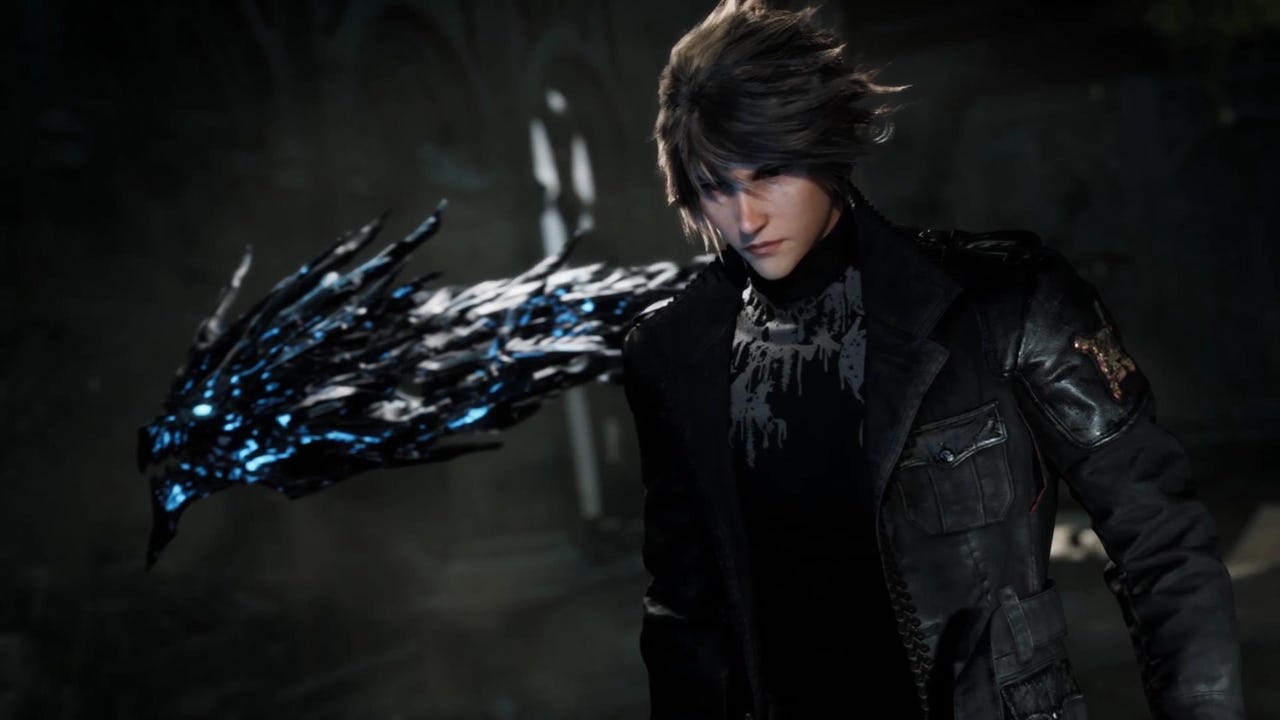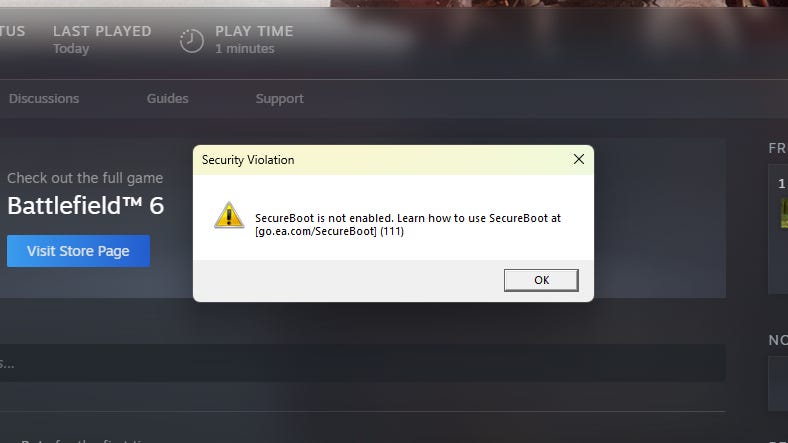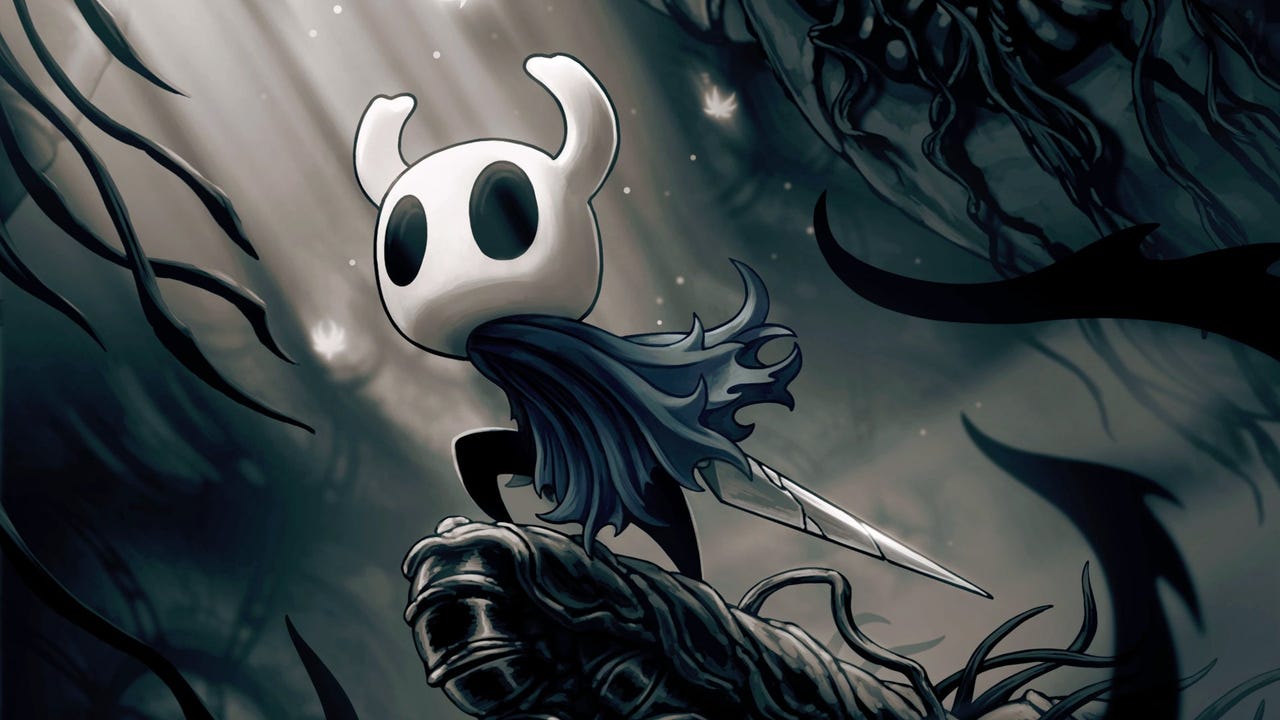If you’ve played more than a few role-playing games, you’ll know how your hero’s journey typically plays out. In the prologue, a terrible thing will happen – an event that demands you move quickly to prevent an apocalypse or defeat an all-encompassing evil. In the following hours, you’ll spend 90% of your time completely ignoring that impending threat, instead helping randomers you met in the pub and collecting loot from dungeons. That’s okay, though, because the big bad will always wait for you. The world perpetually teeters on the brink of extinction until you’re ready to fix it.
Not so in The Blood of Dawnwalker, the first RPG from Rebel Wolves, a new studio founded by former CD Projekt Red staff. Its campaign puts you on a clock: you have 30 days and 30 nights to save your family from evil vampires.
That hold-on-while-I-do-a-thousand-side-quests meme “was definitely one of the reasons” for this interesting approach, creative director Mateusz Tomaszkiewicz says with a smile. “I wouldn’t say it was the sole reason, but I would say this was definitely a starting point for a conversation.”
To properly understand that time pressure system, it’s best to start with how The Blood of Dawnwalker’s campaign is structured. Dubbed a “narrative sandbox,” it doesn’t follow a linear sequence of events. There’s no quest one, quest two, quest three and so on.
“After the prologue, you can go directly to the castle. You could try to rescue your family immediately,” explains Tomaszkiewicz. “There’s a variety of quests you can participate in. You can ignore them, or you can do them. There are a lot of activities that are directly targeted against [main villain] Brencis that will weaken him, for example, and make the attack easier. But at any point you can decide, ‘Okay, I’ve got enough, I’m going to the castle, I’m going to do it.’”
If The Blood of Dawnwalker was a book, then, you’d read the first chapter and then would be free to skip directly to the end. As for the optional chapters between those two points, you can read them in any order… but you’ll need to find the pages first. “You are not railroaded into these plotlines,” Tomaszkiewicz reveals. “You have to find them [in the world] on your own. We do leave breadcrumbs of course, but we want to make sure that it doesn’t feel like ‘These are the three plotlines, do them and then go there,’ right? We wanted to enhance the feeling of exploration and finding these stories in the world.”
That brings us back to the time system. You have 30 days and 30 nights to explore Vale Sangora, a 14th-century kingdom nestled in the Carpathian Mountains, and undertake as many (or as few) of those plotlines as you want. That time element evolved out of Dawnwalker’s protagonist, Coen. A man suffering from both silver poisoning and a vampiric curse, he lives as a mortal during the day and becomes a blood-sucker at night. “The time passage was kind of central to the character,” Tomaszkiewicz notes, especially since your vampiric abilities allow for a very different, more supernatural playstyle after dark.
A Clock That Never Ticks
Perhaps the most important thing to know is that there is no real-time ticking clock in The Blood of Dawnwalker. The minutes do not start counting down from the moment you start a new game. This is not Majora’s Mask or Outer Wilds. “We were thinking that if time would flow naturally, it might be quite unpleasant. The playstyle would change on the go [from human to vampire and back to human] constantly without your input,” explains Tomaszkiewicz. “So that’s where the time as a resource idea came in.”
It’s best to think of time in The Blood of Dawnwalker as a currency rather than a stopwatch. A bar, split into eight sections and displayed in the upper-right of the screen, represents your daily allowance of that currency. Performing significant actions marked with an hourglass icon, such as completing objectives or engaging in certain conversations, will “spend” a section of the bar. Similar to Deathloop, then, simply exploring or completing lower-level tasks will not progress time. Theoretically, you could stay in the noon period of the seventh day for dozens of in-game hours, provided you don’t do anything marked with that hourglass symbol.
While Rebel Wolves is very excited about the way time has shaped The Blood of Dawnwalker’s choices and quest design (of which you can learn more about in our recent preview), Tomaszkiewicz is aware that many people will be skeptical of the system. “I know there are a lot of players that are afraid of missing out, so we definitely tried to not cut off too much content,” he explains. “We are aiming, at least in a normal, average playthrough, for you to be able to do 80% of the content.”
Rebel Wolves has twisted temporal rules to deliver on that goal, particularly when it comes to how time-sensitive events are handled. For example, one storyline involves a burning house, but the flames will blaze indefinitely until you actually discover the building. Only then will you need to act before you spend too many sections of the time bar. There’s no chance of you turning up one day to find a house you never knew even existed is now a pile of rubble and ash.
Of course, regardless of how quests and time are handled, there’s always that looming pressure: 30 days and 30 nights to save your family. But there’s unwritten nuance in that deadline. “Don’t think about it as a game over thing,” Tomaszkiewicz hints. “It’s more like a choice and consequence thing.”
That’s the vital takeaway: you may have a time limit to save your family, but there is no time limit to complete the game. You can continue to play indefinitely after that point. And who is to say that saving your family will even be the most important part of your story? The Blood of Dawnwalker’s Steam page states: “Embark on the quest to save your family, or swear revenge on your sire and destroy everyone standing in your way.” Perhaps that tale of revenge will provide an alternate journey for the main campaign? I ask Tomaszkiewicz to elaborate, but he refuses. That Steam description is already more than enough, he says.
Control Your Dark Urge
It’s easy to see time, even when it only moves during specific actions, like sand slipping through your fingers. As something you lose. But it’s important to remember that progressing time brings you closer to one of The Blood of Dawnwalker’s most exciting features: Coen becomes a vampire at night. When the moon rises, you unlock the ability to walk up walls and along ceilings, and to teleport to rooftops and out-of-reach balconies. Such skills unlock a variety of opportunities, not to mention a stealthier play style. And so, if you want, you can skip the days and play only during the night. It’s a “totally viable way to play,” Tomaszkiewicz confirms, albeit with a warning that ignoring the day also means missing quests only available during the waking hours.
A vampire’s supernatural strength and skills come at a price, though, and it’s one we all know: gulping down vast quantities of blood. You’ll need to satisfy Coen’s hunger regularly, and the only truly gratifying meal is found in the neck of a human. You can opt to ignore that hunger, or feast on much less-satiating animals, but there are consequences to such a lifestyle.
“If you starve Coen, if you don’t feed him enough, and if you go into important conversations, he can lose control and just kill off important NPCs,” Tomaszkiewicz reveals.
Rebel Wolves isn’t unique in creating a game in which you can kill significant characters, but it’s doing so in its own way. You can’t just stride up to someone and cut them down with your sword, for instance – it’s always to do with your vampiric urges. But you do have a choice. “You can decide to give into your vampiric nature whenever it comes knocking,” Tomaszkiewicz explains, describing it as “the whispers of your dark nature.” But that’s only possible if Coen is merely hungry. If you starve him, then every conversation is a roll of the dice. The hunger could seize control, and you’ll have no option but to watch him chow down.
This system is possible thanks to that aforementioned “narrative sandbox” campaign structure. “In a game that has more of a strict core narrative, you couldn’t kill off a character that is pivotal to the story, right? Because the story would fall apart,” notes Tomaszkiewicz. Since all quests in The Blood of Dawnwalker (aside from the first and last) are essentially optional, it means anyone can be killed without derailing the story. Instead, those deaths become the story. You can punish characters you hate, or be caught off-guard by surprise slaughter.
This bloodlust is part of a wider set of overlapping systems designed to make the kingdom of Vale Sangora feel alive. NPCs have routines, and they’ll raise the alarm if they see you stealing or feeding on their neighbours. Rival factions will brawl each other in the streets. And the evil Brencis watches you from afar.
“As you gain more notoriety in the valley, as you do these acts against Brencis, he won’t stay passive,” Tomaszkiewicz reveals. “He will enact these edicts that will hamper your progression. So he might send out more soldiers into the streets, or patrolling the roads, or enforce a curfew. So now it’s more difficult to feed at night.”
Notoriety initially sounds like GTA’s wanted level, or the escalating response of Metal Gear Solid’s guards. But it’s actually more complex than a simple difficulty spike. “Sometimes it can actually be a boon,” Tomaszkiewicz explains. “It’s not just Brencis and his soldiers [who react to your notoriety,] it’s also the people in the valley. They will recognize you and be afraid of you. So in some quest situations it actually might be helpful. There are some factions that fight against Brencis, they don’t like him. So building up notoriety is actually a good way to gain a good standing with them.”
The End and Beyond
The narrative sandbox approach means Rebel Wolves has had to pay close attention to how the story ends. The ability to skip over every major quest, or kill off significant characters, means every player will hit the finale with different levels of knowledge. Some may not even know what a Dawnwalker is, while others will have found solutions to all the major problems. And so when I ask how many endings the story has, Tomaszkiewicz doesn’t have an easy answer.
“This is a very complicated web of connections,” he says. “I can tell you the designer working on the endings is… let’s say the meme of [It’s Always Sunny in Philadelphia’s Charlie Day] with the red tape. That’s him basically. It is a lot of fun, but it’s a lot to keep track of.”
That’s not the only thing the story team needs to consider, either. The Steam page claims that this project is “the beginning of a brand-new saga built with love for the role-playing genre,” and so The Blood of Dawnwalker is just chapter one. The Rebel Wolves team may be building a game, but they are also building an entire universe that they plan to explore in subsequent games.
“We have ideas for the overarching story of Coen,” reveals Tomaszkiewicz. He says sequels are, of course, not guaranteed, but the team has ideas of where to go should this first game be a success.
“There is much more in the IP than just vampires, let’s say,” he teases. “There is this whole hidden world that we are not exploring on purpose in this first game. We want to leave a lot of fuel for the sequels and so on. But we do leave breadcrumbs and hint at these things. So yeah, we have a general idea of where we want to take Coen.”
Such sequels and grander saga ambitions are beyond Rebel Wolves’ grasp for now, just as The Blood of Dawnwalker is beyond our own – at this year’s Gamescom, we were only able to watch a demonstration rather than go hands-on ourselves. And as exciting and promising as that demo was, it’ll take first-hand experience of the narrative sandbox to truly tell if the studio’s bold approach to RPG design has paid off. But just as Coen thirsts for the blood of mortals, I hunger to taste more of this fascinating, risk-taking Slavic fantasy.
Matt Purslow is IGN’s Executive Editor of Features.



Leave a Comment